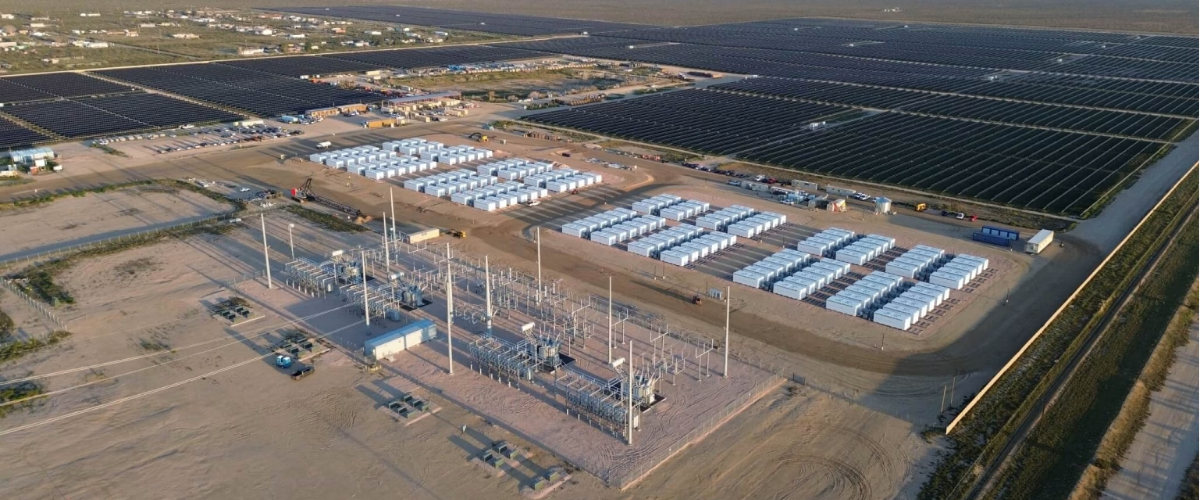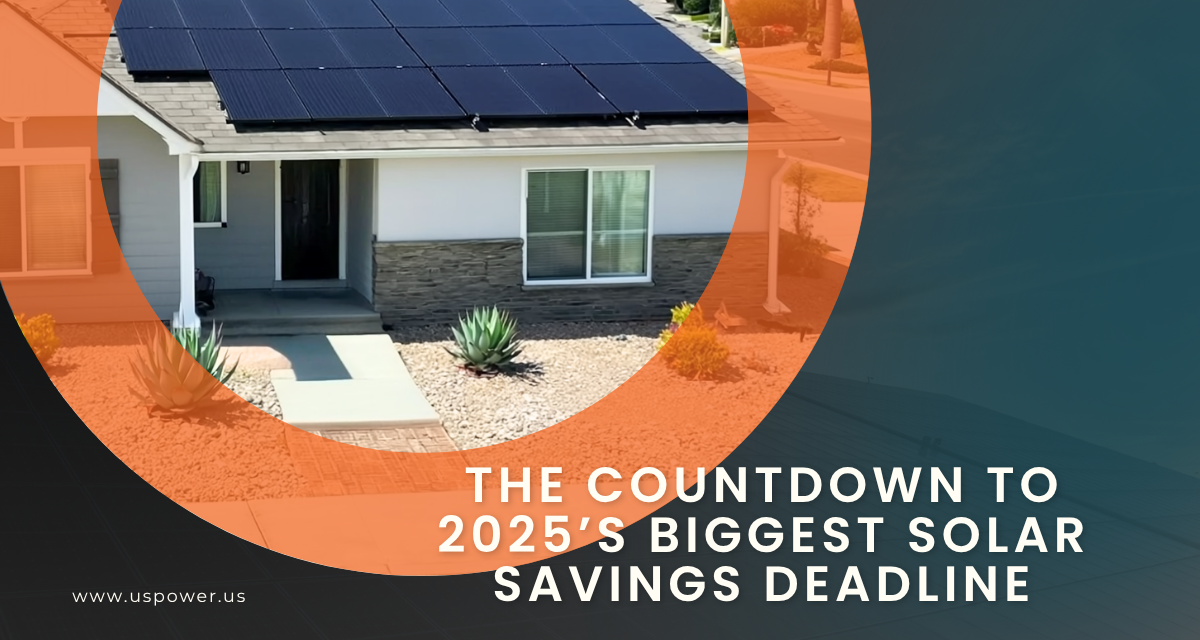How U.S. Grid Trends Shape California’s Solar Future

Solar and Roofing Advisor
With America’s power grid under pressure, solar gives SoCal homeowners relief. Learn why US Power’s factory-direct Qcells panels are the smarter 2025 choice.

As of late 2025, the U.S. electricity grid is at a pivotal moment — one in which demand, infrastructure stress, and strategic investment are converging. For homeowners in Southern California, these national-level trends matter because they shape the environment in which local solar decisions are made. Let’s break down the key developments:
Surge in Demand
The latest insights reveal that U.S. power demand is rising far faster than recent years. For example:
- According to the Bank of America Institute, U.S. electrical demand is expected to grow at a ~2.5% compound annual growth rate (CAGR) through 2035 — a dramatic increase compared with ~0.5% CAGR over 2014-24.
- Much of this growth is being driven by large, concentrated loads: data-centers, advanced manufacturing, electrification of transport and buildings. For instance, the Deloitte 2025 AI Infrastructure Survey estimates that power demand from AI-data centers alone may grow more than thirty-fold by 2035 in the U.S.
- A recent Reuters summary reports that data-centers could consume up to 6.7%-12% of total U.S. electricity by 2030.
In short: more electricity demand, more stress on the grid, and more urgency across all sectors.
Aging Infrastructure & Grid Risk
Simultaneously, the grid itself is under strain. Key facts:
- Roughly 31 % of U.S. transmission assets and 46 % of distribution assets are reportedly at or beyond their useful life.
- For example, in a Department of Energy (DOE) report from July 2025: if current trends continue (retirements, delayed new capacity) some regions face the risk of major reliability issues—e.g., thousands of hours of outages annually.
- Interconnection queues (especially for renewables, storage) are massive — nearly 2,600 GW of generation+storage capacity seeks connection in the U.S. in 2025.
Thus: the grid is old, new-capacity build is competing with large demand, and regional reliability is now a strategic concern.
Shift in Investment Planning & “Demand-hotspots”
Investors and utilities are adapting:
- According to a Reuters report dated October 20 2025, grid investments in transmission & distribution are set to rise ~23 % between 2025-2030 (following a ~27 % rise from 2020-25).
- The focus is shifting from simply connecting new generation (such as large solar farms) to accommodating new large loads (data-centers, electrified factories) in specific regional “hot-zones.” For instance, one grid operator shifted investment priorities toward large energy users rather than merely renewable supply.
- The implication: place-based planning matters. Regions where grid interconnection, transmission access and upgrade planning are solid will see less delay and better value.
What This Means For Homeowners and Distributed Solar
At first glance, these might sound like macro-industry issues — but they have direct local impact:
- When the larger grid is under pressure, distributed solar and storage solutions (on your rooftop) become more valuable for reliability, cost savings and grid-interaction.
- Smoother interconnection, favourable net-metering or export rates often favor regions ahead of the grid-curve; conversely delays or cost increases in congested regions may raise cost or complexity for solar adopters.
- For solar installers: selecting high-efficiency panels, strong warranties and quality installation becomes more than a marketing benefit — it is risk mitigation.
- For homeowners: installing now can lock in incentives, capture value before grid-bottlenecks or utility-rate jumps, and position for the future where grid stress may raise costs.
Thus: The national picture—rising demand, aging grid, strategic investments—sets the stage. As a homeowner in Southern California, your decision to go solar today connects you not just to your rooftop, but to the broader energy future.
National trends vs. Southern California Solar Market
Now that we’ve seen the broader U.S. grid story, let’s bring it home. How do these trends play out locally across Southern California? And how can homeowners use that to their advantage when selecting a solar partner like US Power?
National Context
- The U.S. is pivoting toward investment in grid infrastructure (transmission + distribution) to keep pace with surging load and retirements.
- Large commercial/industrial demands (data centres, EV charging hubs, manufacturing facilities) are creating “hotspots” which attract investment and drive region-specific grid planning.
- Distributed generation (rooftop solar) is part of the solution, but interconnection delays and aged grid components remain constraints.
- In this context, solar adoption is not just an “environmental” decision—it’s increasingly a strategic economic move.
Southern California’s Position
Southern California is a unique territory for solar: high solar insolation, a mature solar market, strong state incentives, and an advanced grid—but also escalating demand (EVs, air-conditioning, commercial loads), and impending grid capacity stress. Key local factors:
- High sunshine / high potential
The region enjoys abundant solar radiation, making rooftop solar highly productive; this stands as a base-advantage. - Growing residential and commercial load
EV adoption, air-conditioning loads (especially as summers stay hotter) and increasing smart-home electrification amplify home energy consumption.
This aligns with national load trends but is especially marked in California. - Grid modernisation in motion
The state’s major utilities (such as Southern California Edison, Los Angeles Department of Water & Power) and grid operator (California Independent System Operator – CAISO) have ongoing programs to manage interconnection queues, enable solar + storage, and reduce grid-congestion.
For example: CAISO reported investing approx. $4.8 billion in the 2024-25 period to accommodate large energy users and relieve grid bottlenecks rather than purely new generation.
That means homeowners are operating in a region where infrastructure improvements are real and committed. - Mature solar incentive environment
California’s solar policies—net-metering (NEM), local incentives, state‐level clean energy goals—have made rooftop solar a well-understood path. But maturity means competition, regulation and grid-access limits may tighten. - Quality and reliability counts more than ever
When grid stress is rising, the difference between average vs. high‐performance solar systems becomes meaningful. A well-installed, high‐efficiency system with strong warranties and American-made components can lead to better lifetime value, fewer issues, better export performance, and more resilience in grid-perturbed conditions.
How US Power Ties into This Local Reality
Here’s how US Power is uniquely positioned for homeowners in Southern California:
- Exclusive partnership with Qcells (American-made panels): You get factory-direct pricing on high-efficiency, premium-quality panels — aligning with the trend of reliability and performance being more important than ever under grid stress.
- Local expertise across Southern California: From Orange County into Los Angeles, Riverside and San Diego counties, US Power understands the local interconnection, permitting, utility-rate issues and NEM-policy environment.
- Focus on “solar + future”: Beyond just panels — the system is designed for high efficiency, strong warranties and readiness for future upgrades (such as battery/storage, EV charging), giving you a system that works today and is prepared for tomorrow’s grid demands.
- Competitive pricing with factory-direct sourcing: Because of the Qcells partnership, you benefit from premium equipment at non-premium markups — helping you lock in strong value before incentive cliffs or pricing changes.
Why Timing and Location Matter
Considering the national-level pressure on the grid and the local Southern California context, the optimal window for homeowners is now. Here’s why:
- Installing now helps you get ahead of interconnection and permitting delays. As demand rises and grid bottlenecks increase, entry into interconnection queues may lengthen or become costlier.
- As utilities invest more in grid upgrades, home solar export and net-metering value may change. Locking in favourable terms now may give long-term financial advantage.
- With growing residential loads (EVs, HVAC, smart-homes) your solar system will likely be offsetting more future consumption — meaning more savings over the long run.
- Premium equipment and installation quality matters more when the margin of error tightens (e.g., higher ambient temperatures, heavier loads). Choosing a trusted provider like US Power ensures you maximise lifetime value and minimise risk.
Why These Trends Matter for Southern California Home Solar Projects
It’s time to get concrete. Let’s dig into specific data, implications, and actions that homeowners in Southern California can take — backed by reliable 2025 facts.
Key facts for Southern California & 2025
- Demand is accelerating
- The national grid demand growth is mirrored in states like California where electrification is accelerating—EVs, smart homes, increased cooling loads. For example: building electrification and EV charging are major contributors to load growth according to the BofA Institute.
- AI data-centers, although not as concentrated in residential zones, still drive network planning shifts which ultimately benefit distributed solar by backing grid upgrades.
- Grid assets are under strain
- With large portions of infrastructure near end-of-life (31% transmission, 46% distribution nationally) and Southern California being a high-demand region, grid reliability is increasingly important.
- In California, CAISO’s shift to investing ~$4.8 billion in 2024-25 to support large energy users and relieve grid stress is a sign of real infrastructure commitment.
- Solar & storage matter more than ever
- Distributed generation isn’t just “nice to have” — it is part of the resilience story. With potential grid-stress or export constraints, future-ready homeowners will value systems that integrate solar, high efficiency, and battery readiness.
- The U.S. Energy Infrastructure Report Card (May 2025) shows that in 2024, the U.S. added more than 36 GW of solar capacity (nearly double 2023’s 18.4 GW) and battery storage doubled that year.
- California remains one of the most favourable states for rooftop solar in terms of irradiance, local policy, and market maturity — meaning high potential yield and strong financial case.
- Quality and sourcing matters
- As grid stress increases, a difference of a few percentage points in panel efficiency or better warranty can translate into significant lifetime performance and savings.
- American-made or high-reliability equipment mitigates risk (imports, supply chain, warranty support). US Power’s exclusive factory-direct partnership with Qcells means homeowners benefit from premium hardware without typical mark-ups.
- Ensuring the installer knows local rules (permitting, utility interconnection, export rates, HOA compliance) is key. US Power’s local Southern California focus provides that.
What This Means for YOU — Homeowner Action Plan
If you're a homeowner in Southern California thinking about going solar (or upgrading), here’s how to translate these facts into action:
- Get your energy baseline and future-proof your design
- Measure your current usage (kWh/year), incl. EV charging, HVAC, etc.
- Project 5-10 year growth: Will you add an EV charger, upgrade HVAC, add more smart appliances?
- Design your solar system with head-room for that growth — not just current offset.
- Choose high-efficiency, premium panels with strong warranties
- Focus on premium panel brands (such as Qcells) with strong performance warranties (25+ year output guarantee).
- Ask about degradation rate: lower is better over the lifetime of your system.
- Given grid stress, reliability counts: American‐made or locally‐backed equipment can avoid supply chain risk.
- Work with an installer experienced in your region’s utility/permit environment
- Southern California utilities and jurisdictions have specific rules for interconnection, net-metering (NEM2/NEM3 discussions), export rates, permitting timelines.
- A local installer like US Power understands Orange County, Los Angeles, Riverside, San Diego permitting and utility queues — helping avoid delays and cost surprises.
- Consider integration with storage and future loads (EVs, home battery, smart energy management)
- With grid investments shifting toward accommodating heavy loads and bi-directional flow, pairing solar with battery storage may boost value (export during peak times, backup power).
- Even if you start with solar only, design the system so battery integration in the future is seamless.
- Act sooner rather than later
- Incentives may shift: while California remains supportive, national policy or state rules may change.
- Interconnection queues / permitting may lengthen as more homeowners, communities adopt solar.
- By locking in a system now, you benefit from current pricing, favourable export/net-metering terms, and earlier start to savings.
Why Choosing US Power Makes Sense Now
When you weigh all of the above — national grid pressures, regional demand growth, local market maturity, equipment quality and installer-competence — you want a partner who checks all the boxes:
- US Power’s advantage: factory-direct pricing on Qcells (premium American-made panels) means you get top-tier hardware at better value.
- Southern California expertise: US Power knows the local jurisdictions — meaning smoother permitting, quicker interconnection, fewer surprises.
- High-efficiency systems: In a region where load growth and grid stress are real, having more output per roof-square-foot matters.
- Future-ready design: Systems sized and installed with an eye to adding storage, EV integration, smart energy management.
- Trust and reliability: As the grid becomes more challenged, quality matters — both on the hardware side and the installation side.
The Bottom Line & Your Next Step
- The U.S. grid is facing record shifts: growing demand (especially from data centres, EVs, electrified buildings), aging infrastructure and strategic investments toward high-load “hotspots”.
- Southern California stands at the frontline of this transition: high solar potential, rising loads, grid upgrades underway — but also evolving policy and infrastructure risk.
- For homeowners, this means rooftop solar is more than an environmental gesture — it’s a smart investment in energy independence, cost savings and resilience.
- Timing matters: installing now gives you a head-start before potential interconnection delays, incentive changes or export rate reductions.
- Choosing the right equipment (premium, high-efficiency, American-made), the right installer (local expertise, smooth permitting/interconnection), and thinking ahead (EVs, storage, future usage) pays dividends.
Ready to take control of your energy future with US Power? Don’t let the grid’s stress become your extra cost. Book your free no-obligation consultation today and discover how you can:
- Slash your monthly electricity bills
- Lock in factory-direct pricing on American-made QCells panels
- Design a solar system built for your home’s future (EVs, storage, smart loads)
- Take advantage of current incentives and interconnection terms in Southern California
Schedule your FREE consultation today!
Act now while the grid is shifting — and secure your solar advantages before the next wave of demand and infrastructure change hits.
Artículos relacionados
Nuestros blogs relacionados
Everything about the 2025 California solar mandate for California homeowners.
New CA ruling upholds NEM 3.0 net-metering, reshaping rooftop solar incentives.
Last chance for 30% solar savings—book a schedule for your FREE consultation.
Nuestros socios de marcas de energía solar y techos








Empoderamos a las comunidades y las empresas para que aprovechen las energías limpias y renovables energía solar soluciones que impulsan el crecimiento sostenible.
Derechos de autor © 2025 US POWER | Energía solar y techosUS Power - Axia by QCells. All Rights Reserved.
La privacidad es importante para nosotros, por lo que tiene la opción de deshabilitar ciertos tipos de almacenamiento que pueden no ser necesarios para el funcionamiento básico del sitio web. El bloqueo de categorías puede afectar a su experiencia en el sitio web.
Imprescindible
Estos elementos son necesarios para habilitar la funcionalidad básica del sitio web.
Personalización
Estos elementos permiten que el sitio web recuerde las elecciones que ha realizado (como el nombre de usuario, el idioma o la región en la que se encuentra) y proporcionan funciones mejoradas y más personales.
Mercadeo
Estos artículos se utilizan para ofrecer publicidad que sea más relevante para usted y sus intereses.
Analítica
Estos elementos ayudan al operador del sitio web a comprender cómo funciona su sitio web, cómo interactúan los visitantes con el sitio y si puede haber problemas técnicos.
Nosotros y nuestros socios externos utilizamos cookies y otras tecnologías para mejorar y rastrear su experiencia en este sitio, realizar análisis y personalizar el marketing para usted. Al usar el sitio, aceptas que usemos estas tecnologías, incluido el registro y el monitoreo de tus interacciones con el sitio.
¡Obtenga una estimación solar instantánea usando el satélite!










